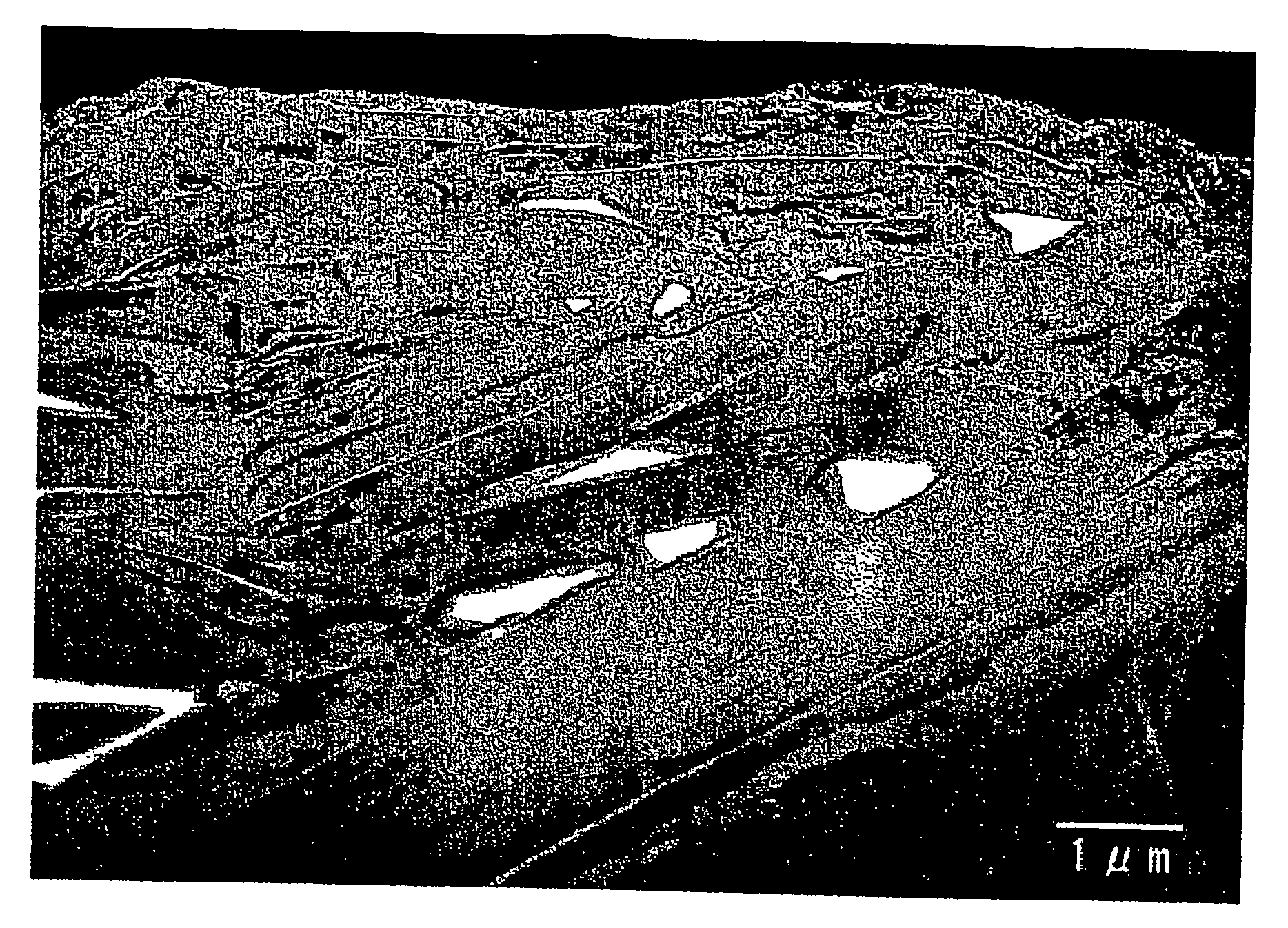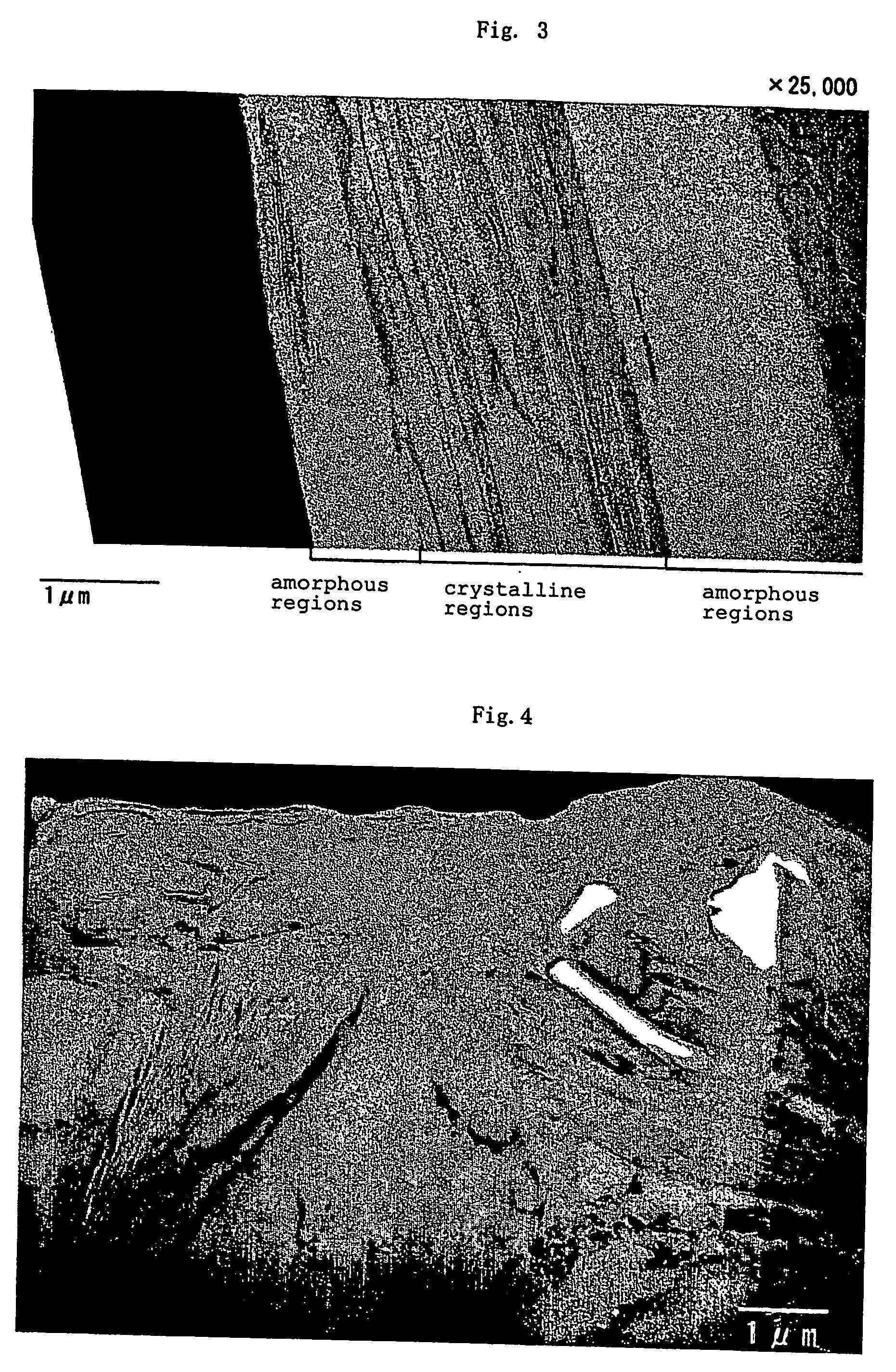Carbon material for battery electrode and production method and use thereof
a battery electrode and carbon material technology, applied in the direction of aqueous electrolyte fuel cells, cell components, electrochemical generators, etc., can solve the problems of serious practical problems in terms of production cost and mass productivity, low capacity, and low discharge capacity, and achieve excellent coulombic efficiency and low irreversible capacity. , the effect of high discharge capacity
- Summary
- Abstract
- Description
- Claims
- Application Information
AI Technical Summary
Benefits of technology
Problems solved by technology
Method used
Image
Examples
example 1
[0153] There were employed carbonaceous particles serving as core material, which had an average particle size of 20 μm as measured by means of the laser diffraction scattering method and an average roundness of 0.88, in which the area ratio of crystalline carbon regions of the particles to amorphous carbon regions thereof in a transmission electron microscope bright-field image of the particles obtained is 80:20.
[0154] The carbonaceous particles (500 parts by mass), phenol (398 parts by mass), 37% formalin (466 parts by mass), hexamethylenetetramine serving as a reaction catalyst (38 parts by mass), and water (385 parts by mass) were placed into a reaction container. The resultant mixture was stirred at 60 rpm for 20 minutes. Subsequently, while the mixture was stirred, the container was evacuated to 0.4 kPa (3 Torr) and maintained at the pressure for five minutes, and the pressure in the container was returned to atmospheric pressure. This procedure was carried out three times, t...
example 2
[0159] The procedure of Example 1 was repeated, except that particles having been obtained through granulation of flaky graphite (average particle size: 5 μm) by use of a Lodige mixer and having an average particle size of 20 μm as measured by means of the laser diffraction scattering method and an average roundness of 0.88 was employed as carbonaceous particles serving as core material, to thereby produce a carbon material. Physical properties of the thus-produced carbon material were measured, and the material was employed for battery evaluation. The results are shown in Tables 1 and 2.
example 3
[0160] Water (5.0 parts by mass) was added to an ethanol solution of a phenol resin monomer (BRS-727, product of Showa Highpolymer Co., Ltd.) (5.5 parts by mass as reduced to resin solid content), and the resultant mixture was stirred such that the solution was completely dissolved in water. The resultant solution was added to carbonaceous particles similar to those employed in Example 1 such that the phenol resin solid content was 10 mass % on the basis of the entirety of the carbonaceous particles, and the resultant mixture was kneaded by use of a planetary mixer for 30 minutes. The resultant mixture was dried in a vacuum dryer at 150° C. for 2 hours. The thus-dried product was placed in a heating furnace, and the inside of the furnace was evacuated and then filled with argon. Subsequently, the furnace was heated under a stream of argon gas. The temperature of the. furnace was maintained at 2,900° C. for 10 minutes, and then the furnace was cooled to room temperature. Thereafter, ...
PUM
| Property | Measurement | Unit |
|---|---|---|
| Temperature | aaaaa | aaaaa |
| Temperature | aaaaa | aaaaa |
| Temperature | aaaaa | aaaaa |
Abstract
Description
Claims
Application Information
 Login to View More
Login to View More - R&D Engineer
- R&D Manager
- IP Professional
- Industry Leading Data Capabilities
- Powerful AI technology
- Patent DNA Extraction
Browse by: Latest US Patents, China's latest patents, Technical Efficacy Thesaurus, Application Domain, Technology Topic, Popular Technical Reports.
© 2024 PatSnap. All rights reserved.Legal|Privacy policy|Modern Slavery Act Transparency Statement|Sitemap|About US| Contact US: help@patsnap.com










